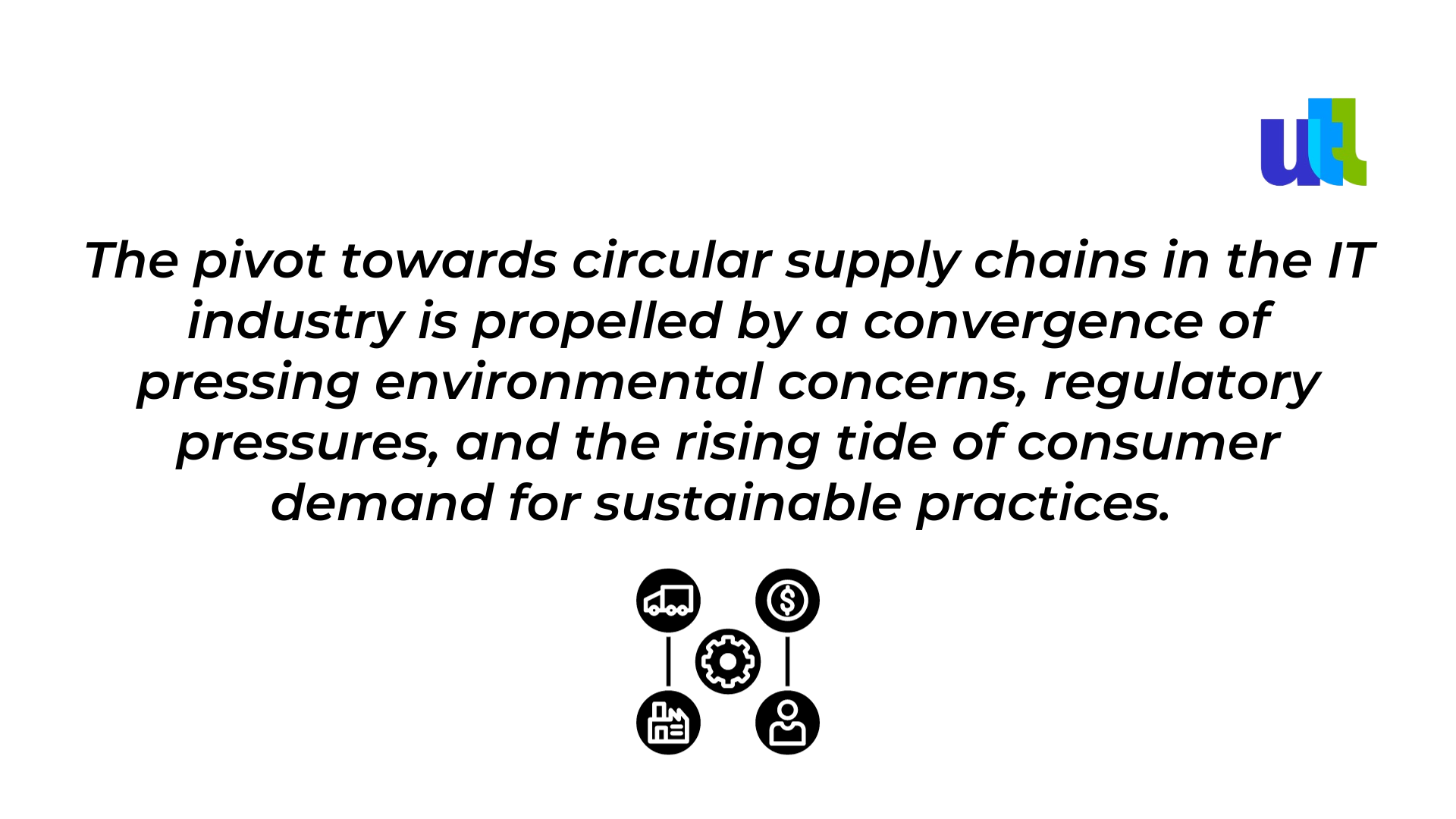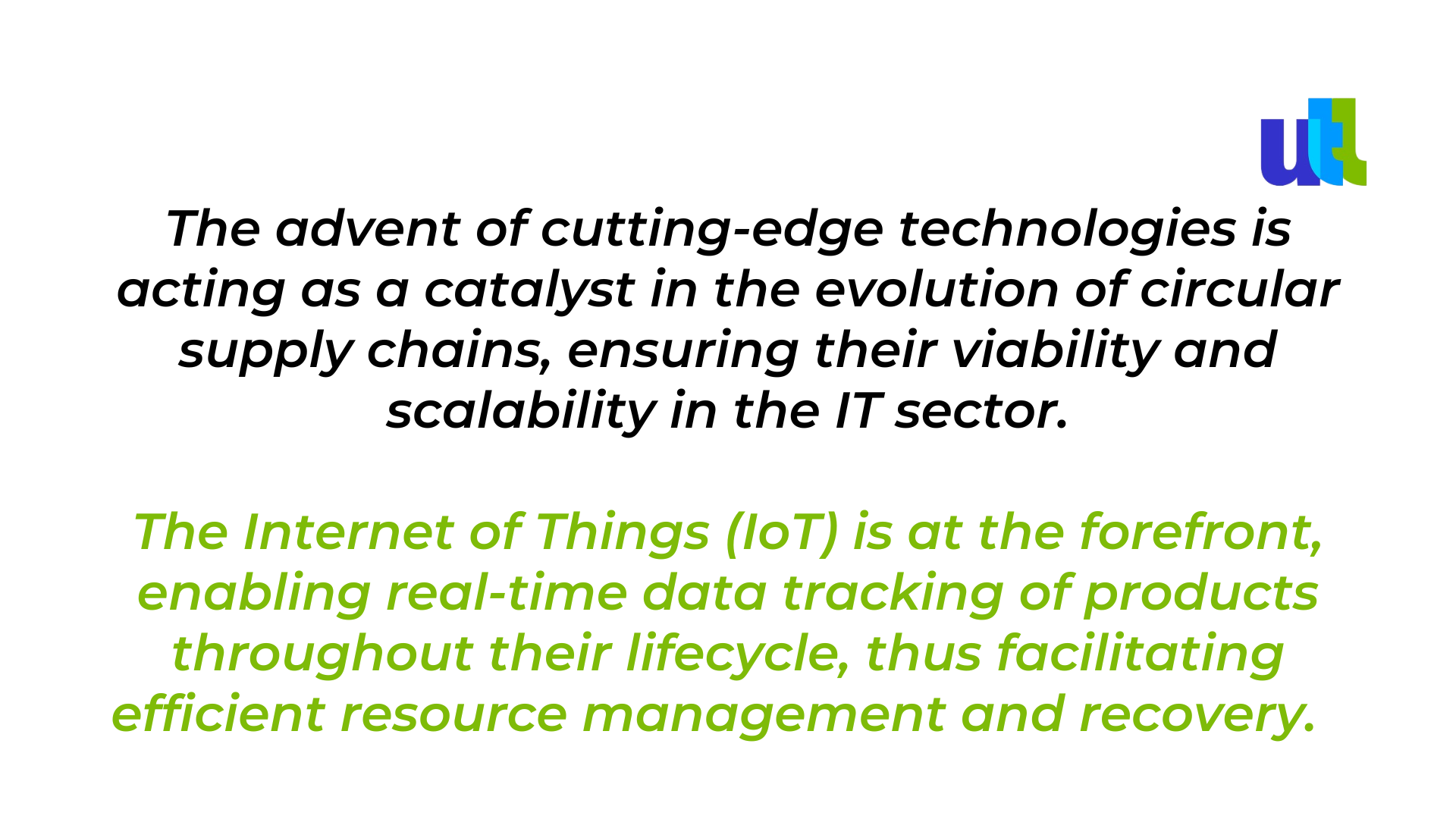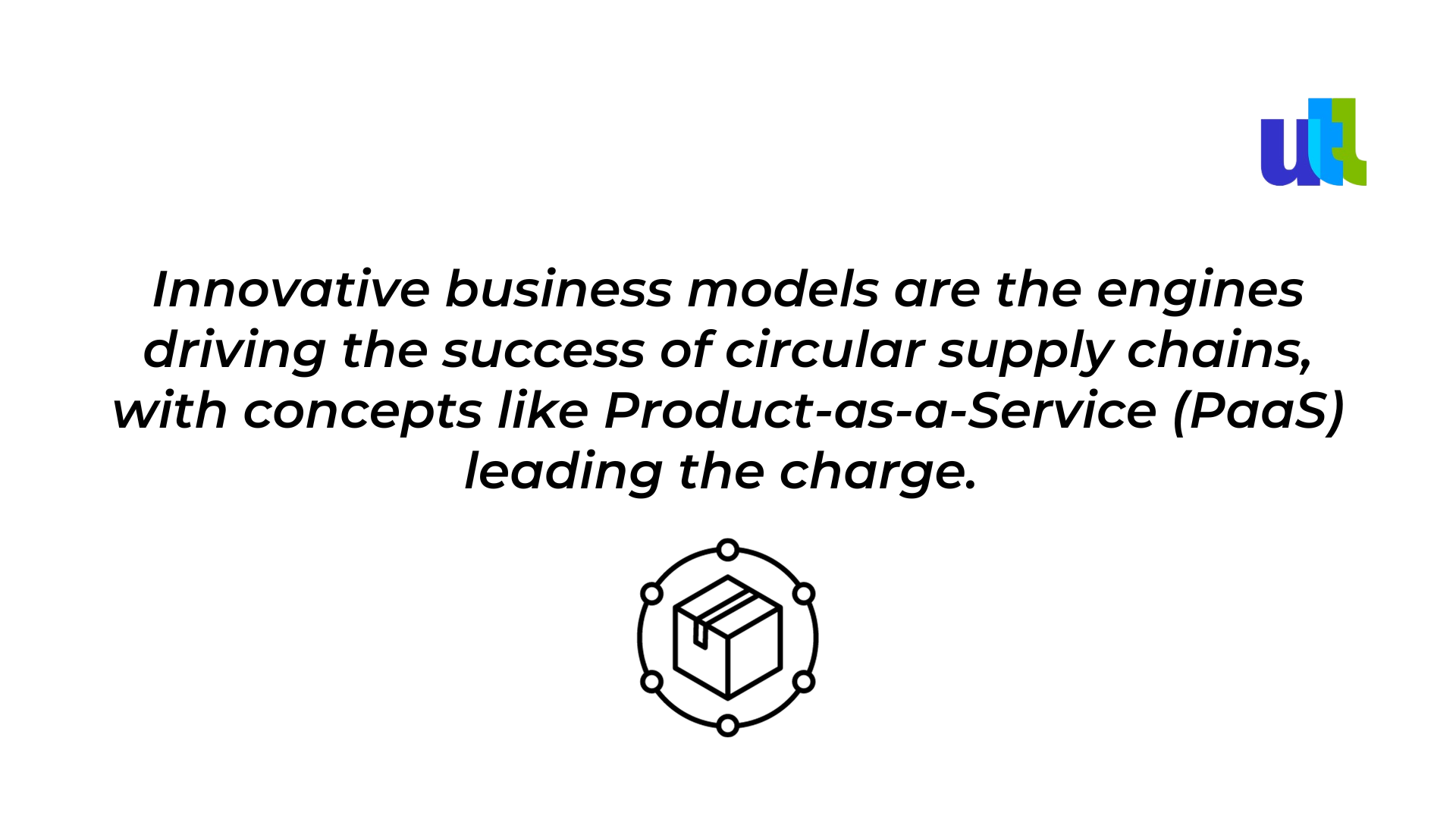In an era where sustainability is not just a buzzword but a business imperative, the Information Technology (IT) sector is increasingly turning its attention to the concept of the circular supply chain. This innovative approach is redefining how resources are used and valued, moving away from the traditional linear model of 'take-make-waste' to a more regenerative and restorative system. A circular supply chain emphasizes the continuous use of resources, minimizing waste and the need for new raw materials through recycling, refurbishing, and reusing. It's not merely an environmentally conscious decision; it's a strategic move that can lead to significant cost savings, operational efficiencies, and a robust competitive edge. By integrating the principles of the circular economy, IT companies are not only contributing to the planet's health but also unlocking new opportunities for innovation and growth. The shift from a conventional to a circular supply chain is more than a change in operations; it's a transformation in thinking that is setting the stage for the future of sustainable business practices.
The driving forces behind the shift to circular supply chains

As the environmental footprint of tech giants comes under scrutiny, regulations are tightening, compelling businesses to reconsider their resource utilization strategies. Consumers, more informed and ethically conscious than ever, are favoring companies that commit to eco-friendly operations, making sustainability a core component of customer loyalty and brand differentiation. Moreover, the allure of long-term cost savings and operational efficiencies through circular practices is undeniable. By maximizing the lifecycle of resources, companies are discovering that sustainable practices not only conserve the environment but also bolster the bottom line. This triad of drivers is creating a powerful impetus for IT companies to innovate and integrate circularity into their supply chains, marking a critical step toward a more sustainable and economically sound future.
Key elements of a circular supply chain
At the heart of a circular supply chain are three core elements that collectively redefine resource management: resource recovery and recycling, product life extension strategies, and design for disassembly and reuse. Resource recovery and recycling are pivotal, turning waste into wealth by bringing used materials back into the production cycle, thereby reducing the need for virgin resources. Product life extension strategies then come into play, challenging the throwaway culture by repairing, upgrading, and refurbishing existing products to prolong their usability. Finally, the principle of design for disassembly and reuse is transforming the way products are conceived from the ground up, ensuring that at the end of their current use, components can be easily separated and repurposed. These elements are not standalone; they are interconnected gears in the machinery of a circular supply chain, each critical to achieving a sustainable and resilient IT industry. By embracing these practices, companies can create a closed-loop system that promotes sustainability, fosters innovation, and delivers tangible economic benefits.
Technology's role in enabling circular supply chains

AI and machine learning algorithms are leveraging this data, providing predictive analysis that can forecast product wear and tear, optimize maintenance schedules, and manage resource allocation with unprecedented precision. Meanwhile, blockchain technology is revolutionizing the trust and transparency aspect of supply chains. It creates an immutable ledger of transactions and product histories, ensuring that every stakeholder can verify the authenticity and sustainability claims of products and materials. Together, these technological instruments are not just enablers but are actively shaping the architecture of circular supply chains, making them more responsive, adaptive, and trustworthy. In the IT world, where innovation is relentless, these technologies are proving indispensable for companies committed to embedding circularity into their core operations.
Challenges in implementing a circular supply chain
Implementing a circular supply chain presents a unique set of challenges that extend beyond mere technical and operational hurdles. The integration of circular principles demands a reengineering of existing supply chain infrastructures, necessitating significant investment in new technologies and processes. This transformation is not just about upgrading systems, but also about changing the corporate mindset and culture. It requires stakeholders at all levels to embrace a paradigm shift from linear to circular thinking, which can be a monumental task in organizations accustomed to traditional supply chain models. Furthermore, navigating the complex landscape of regulations and compliance standards adds another layer of complexity. As legislation varies across regions and continues to evolve with the growing emphasis on environmental sustainability, companies must remain agile and informed to ensure that their circular supply chain practices adhere to all applicable laws and industry standards. These challenges are substantial, but not insurmountable, and must be addressed head-on for a successful transition to a circular supply chain model.
The economic impact of circular supply chains
The transition to circular supply chains heralds a new economic landscape rife with opportunities for cost savings and efficiency gains. By reimagining waste as a resource, companies can reduce material costs and create more value from each unit of input. This efficiency isn't just about cutting costs; it's about optimizing the entire lifecycle of products and services to deliver more with less. Additionally, the circular model opens the door to innovative business opportunities, such as offering products-as-a-service or developing new markets for refurbished and recycled products. These ventures can tap into unexplored revenue streams and diversify business portfolios. Moreover, in the competitive arena of the IT industry, companies that adopt circular supply chains can distinguish themselves by demonstrating sustainability leadership. This can enhance brand reputation and loyalty, providing a substantial competitive advantage in a market where consumers and businesses alike are increasingly making decisions based on environmental impact. The economic implications of circular supply chains are thus profound, positioning them as a transformative force for businesses ready to invest in a sustainable future.
Circular design principles in IT
In the sphere of IT, circular design principles are reshaping the way products are conceptualized and created. By prioritizing longevity and reparability, designers are now producing hardware that not only stands the test of time but can also be easily repaired, reducing the need for frequent replacements and thus minimizing e-waste. Modular design takes this a step further, allowing for individual components to be upgraded without the need to discard the entire device, which fosters a culture of sustainability amongst consumers and manufacturers alike. Standardization across devices ensures that parts can be interchanged or replaced, streamlining the repair process and reducing complexity. Moreover, incorporating recycled materials into new products closes the loop of the supply chain, ensuring that materials are reutilized in the production cycle, reducing the reliance on virgin resources and decreasing the environmental footprint. These principles are not just ethical choices but strategic ones that position IT companies as leaders in the march towards a more sustainable and resilient industry.
Supply chain collaboration and partnerships
The success of circular supply chains in IT is not solely the result of individual corporate efforts but is also significantly driven by collaboration and partnerships along the supply chain. Sustainable sourcing has become a joint venture where IT companies and their suppliers work in tandem to ensure the procurement of materials is both environmentally responsible and economically viable. Such partnerships often extend to sharing resources, where companies engage in symbiotic relationships to optimize the use of materials and reduce redundancy. Furthermore, industry alliances and initiatives play a critical role in scaling circular supply chain practices. These alliances can set industry-wide standards, share best practices, and drive collective action towards common sustainability goals. By uniting forces, IT companies and their partners can address systemic challenges more effectively, paving the way for a more resilient and sustainable future. These collaborations are not just about doing good; they're about creating shared value that benefits all stakeholders involved.
Customer engagement and circular economy
In the journey towards a circular economy, engaging customers is as crucial as redesigning processes. Educating consumers about the lifespan of products is a key starting point, helping them understand the value of choosing durable goods and the impact of their purchasing decisions on the environment. Furthermore, incentivizing customers to return and recycle products they no longer need can significantly bolster the effectiveness of circular supply chains. These incentives can take various forms, from discounts on future purchases to membership in sustainability programs. Lastly, building a brand that stands for sustainability can create a powerful emotional connection with consumers, who are increasingly looking to support businesses that reflect their own values. By positioning themselves as champions of the circular economy, IT companies can foster a loyal customer base that's not only invested in their products but also in their approach to business—one that prioritizes the health of the planet alongside profitability.
Circular supply chain and corporate social responsibility (CSR)
The integration of circular supply chain practices aligns seamlessly with Corporate Social Responsibility (CSR) goals, as it reflects a company's commitment to sustainable development and responsible resource management. By aligning circular practices with CSR objectives, businesses not only reduce their environmental impact but also strengthen their social contract with customers, investors, and the broader community. Transparent reporting and communication of progress in circular initiatives are essential to this alignment, as they demonstrate accountability and provide measurable evidence of commitment. Moreover, engaging stakeholders through clear and honest dialogue about circular supply chain efforts fosters trust and encourages collaboration. It allows for shared insights and collective problem-solving, further embedding sustainability into the corporate ethos. Transparency isn't just about good PR; it's about building a foundation of credibility and trust that supports long-term, sustainable growth.
Innovative business models supporting circular supply chains

By shifting from ownership to access, PaaS extends the lifecycle of products and ensures their optimal use. Reverse logistics and take-back programs complement this by simplifying the return process for consumers, ensuring products and materials flow back into the production cycle rather than ending up as waste. These programs not only recover value from used products but also reinforce consumer loyalty and brand reputation. Additionally, remanufacturing and refurbishing old products breathe new life into them, meeting consumer needs while significantly reducing environmental impact. Such models not only respond to the growing demand for sustainable products but also forge a path for companies to operate within a regenerative economy, where waste is a concept of the past and materials are in continuous circulation.
Measuring the success of circular supply chains
The efficacy of circular supply chains can be quantified and refined through a robust framework of Key Performance Indicators (KPIs), environmental and social impact metrics, as well as a commitment to continuous improvement and benchmarking. KPIs specific to circularity, such as the percentage of recycled input materials, the rate of product returns for refurbishment, and the efficiency of resource recovery processes, provide tangible targets for companies to measure and improve upon. Beyond the balance sheet, environmental and social impact metrics enable businesses to assess their wider footprint, including reductions in greenhouse gas emissions, water usage, and waste generation, as well as the socio-economic benefits they bring to communities. These metrics facilitate a culture of continuous improvement, encouraging companies to not just track their performance but to constantly seek ways to enhance their circular supply chain processes. Benchmarking against industry best practices further helps companies to understand their position in the marketplace and to identify areas for innovation and growth. This systemic approach to measurement ensures that circular supply chains are not just conceptually sound but are delivering real, positive impacts.
Future trends and predictions in circular supply chains
The horizon for circular supply chains is rich with potential, driven by emerging technologies that promise to magnify their impact. Advancements in material science, for instance, are expected to yield more durable and recyclable materials, while innovations in logistics and automation could streamline the reverse logistics necessary for efficient product returns. As these technologies mature, scaling circular practices within the IT sector is poised to become more feasible, with widespread adoption leading to a substantial reduction in environmental impact. Looking to the next decade, we can anticipate a surge in circularity becoming the norm rather than the exception, as regulatory pressures intensify and consumer preferences further tilt towards sustainability. We may also see circular principles influencing not just supply chains but the very business models upon which IT companies are built, fostering a new era of sustainable innovation. These developments will likely forge a more resilient and environmentally responsible IT sector, setting a benchmark for industries worldwide.
Conclusion: Embracing circular supply chain for a sustainable future
As we reflect on the transformative journey of the circular supply chain, it's clear that the path towards sustainability is both challenging and rewarding. The benefits—ranging from environmental conservation to economic resilience and innovation—are compelling. Yet, the road is paved with challenges, including the need for technological investment, cultural shifts, and navigating complex regulations. For IT companies, the call to action is urgent: to embrace circular principles, innovate relentlessly, and lead by example. As we look ahead, the circular supply chain is not just an alternative—it's becoming the blueprint for a sustainable future. It's an opportunity for IT companies to rewrite the rules of production and consumption, to foster a world where resources are valued and nothing is wasted. The journey is ongoing, but the destination—a thriving, circular economy—is within sight, promising a legacy of prosperity and environmental stewardship for generations to come.
For free consultation on circular supply chain, click here.
----------------------------------------------------------------------------------------------
View the full presentation:
WRITTEN BY
Milda Butkeviciute
2024-01-12


































































































































































































